Meet the Potter
Bob Johnson
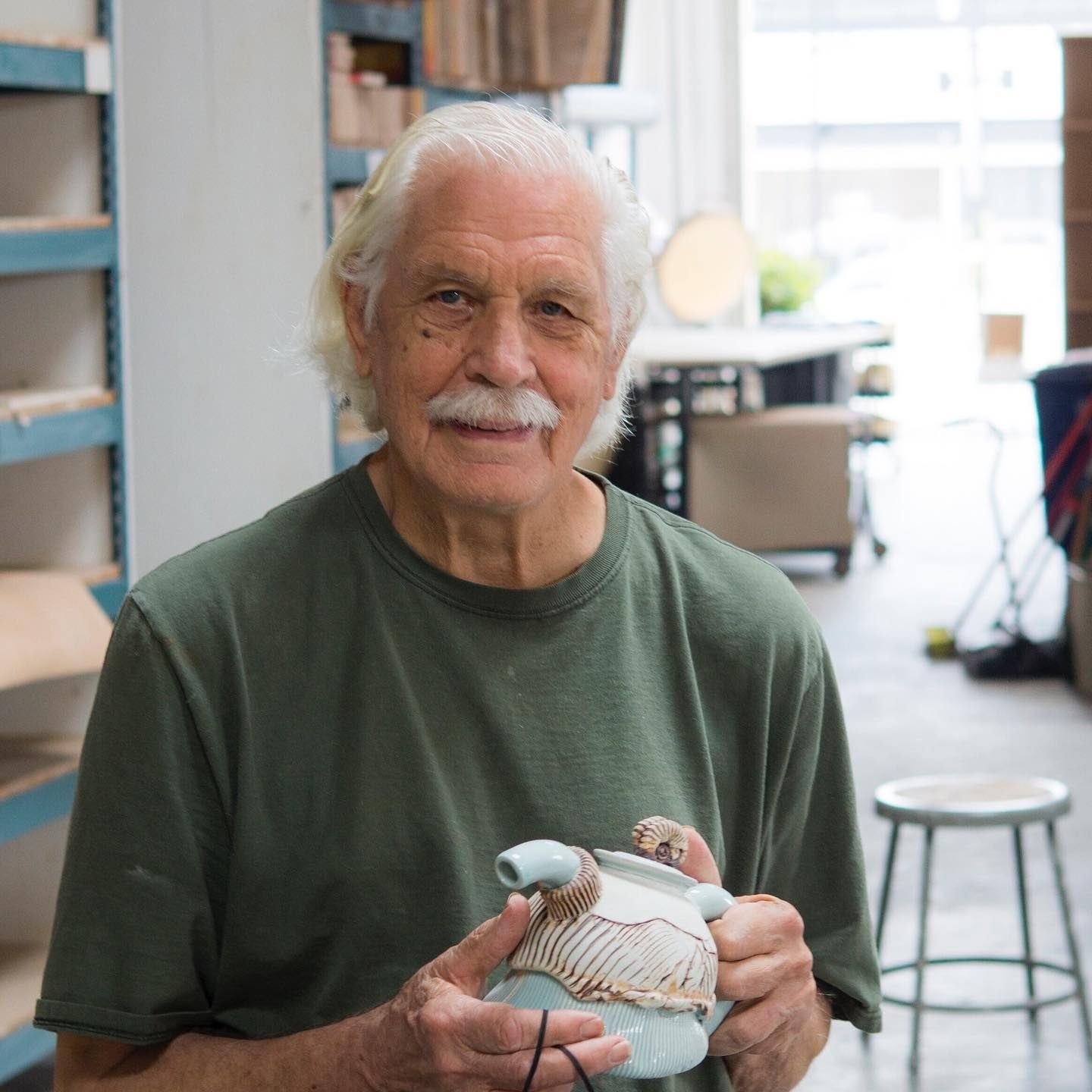
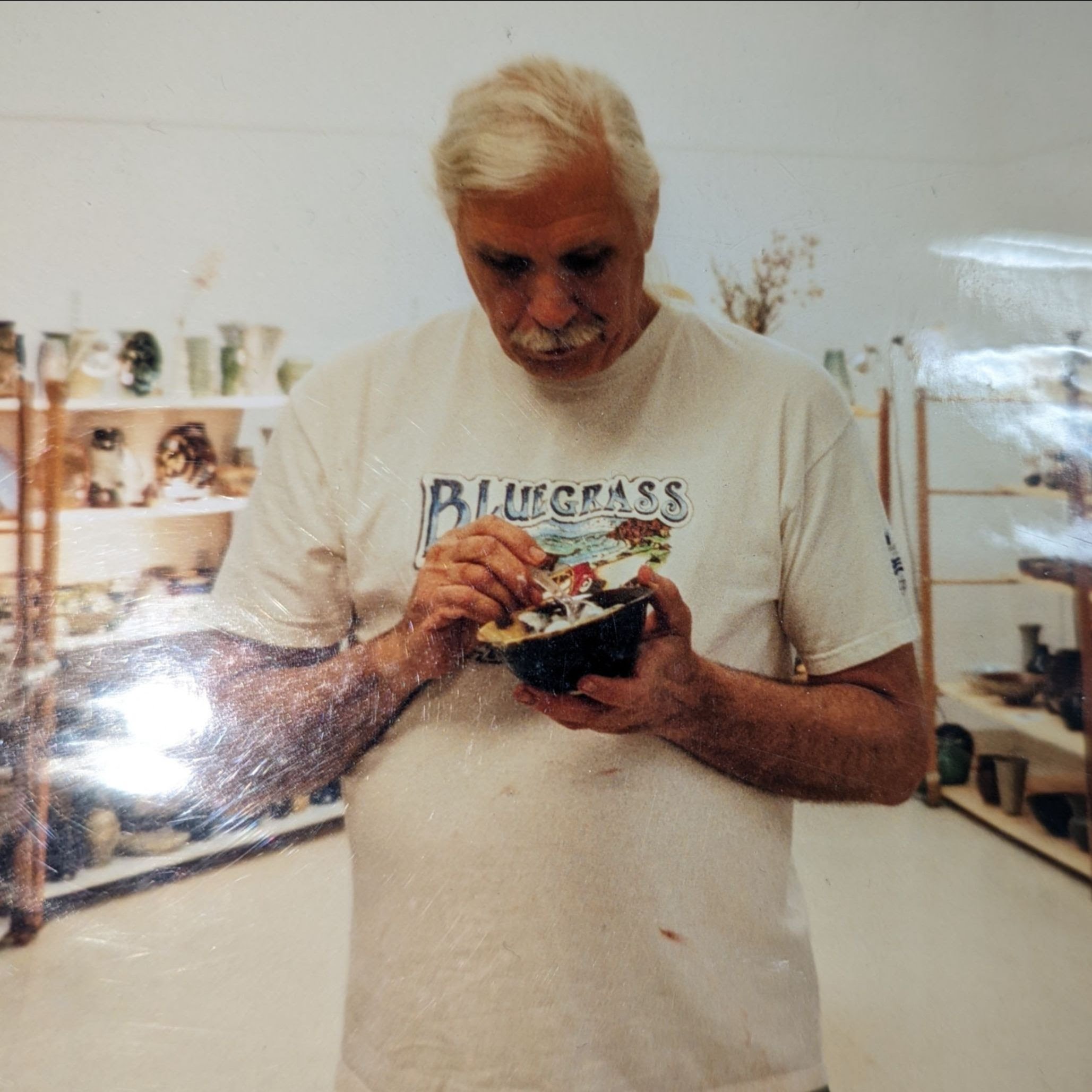
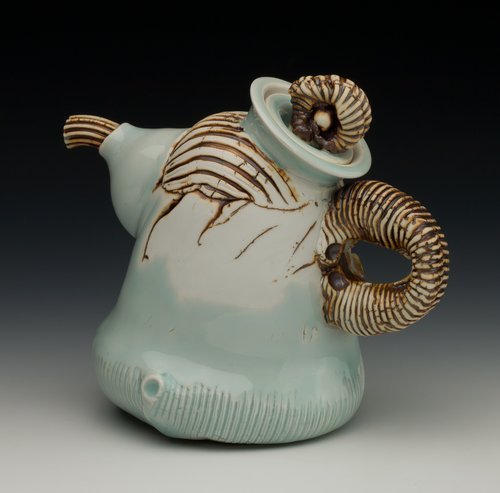
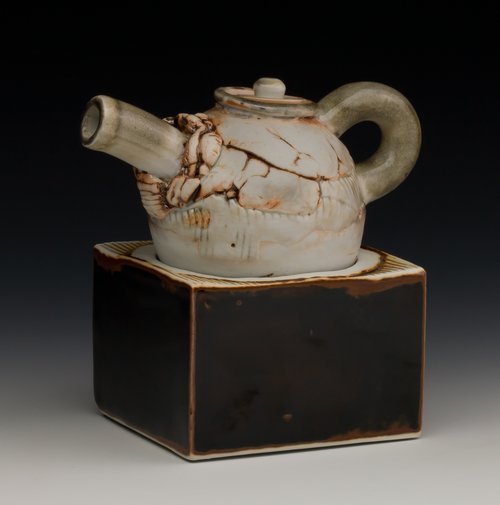
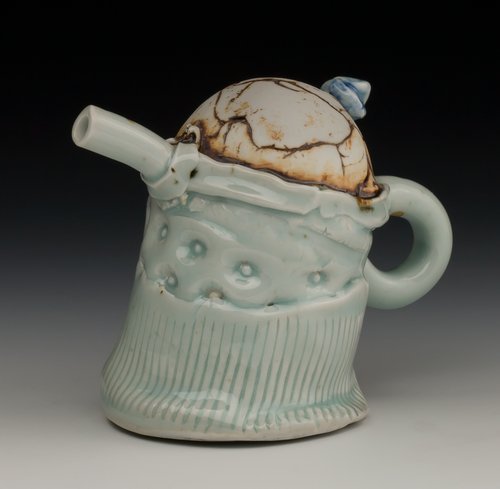
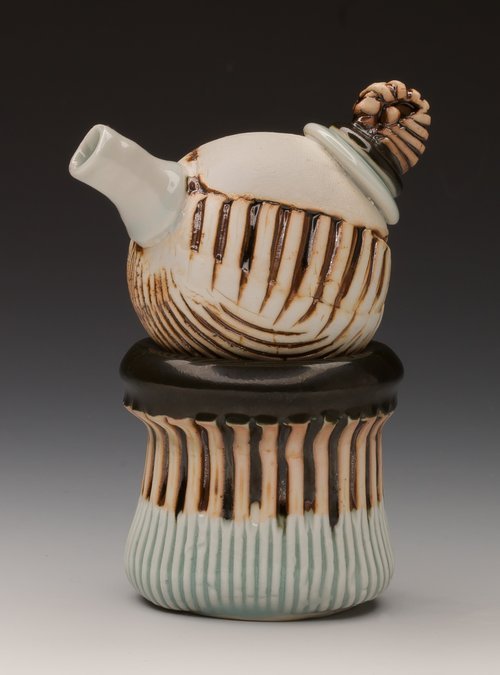
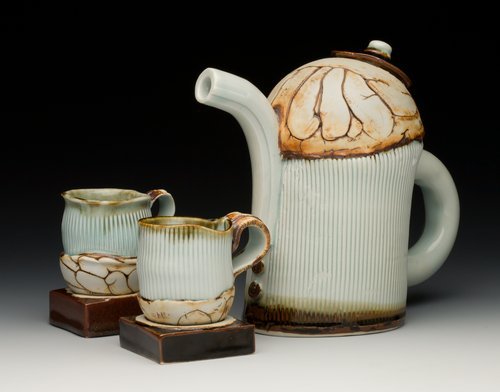
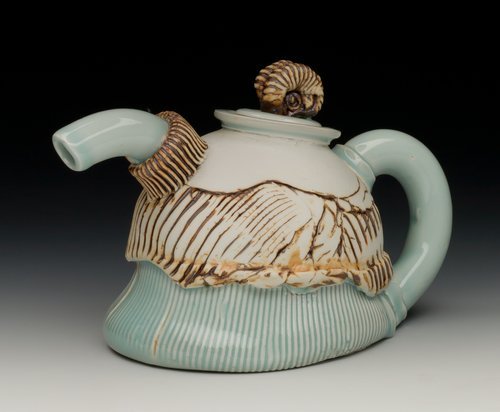

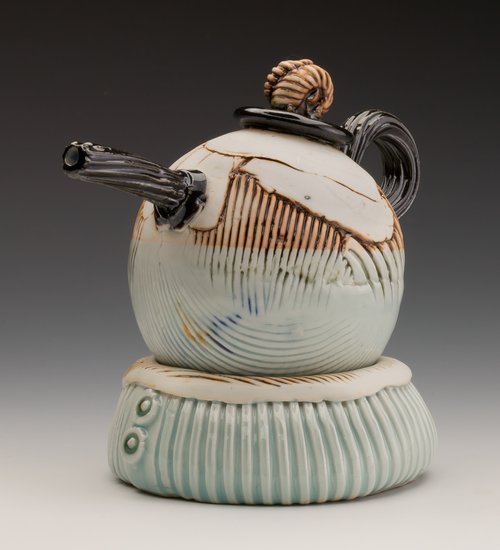
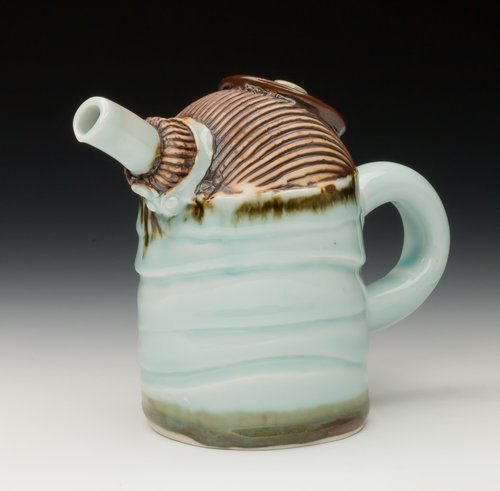
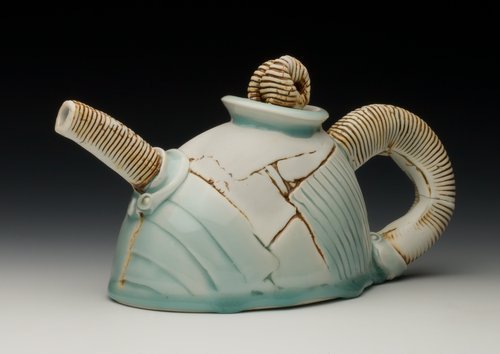
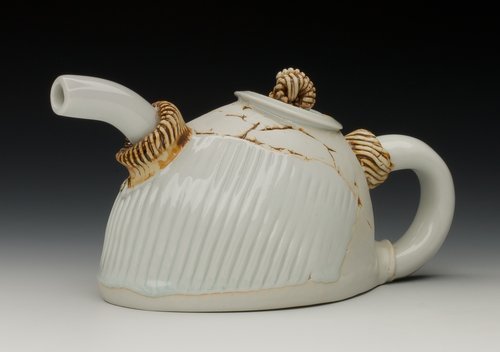
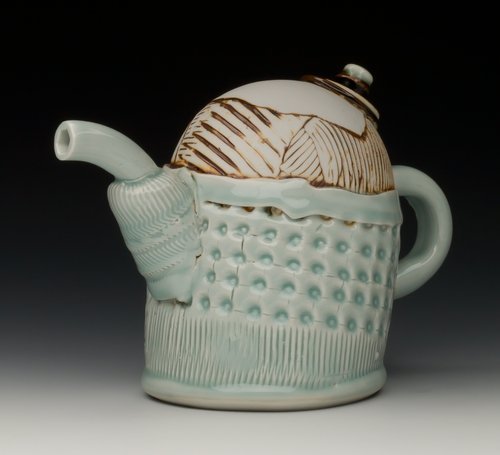

Bob Johnson is a living national treasure and if you don’t know him or have not taken a class from him, treat yourself and learn as much as you can from this master potter. I had the privilege to chat with Bob one beautiful June afternoon. Bob was not only generous with his time, but he graciously shared his clay journey with me and his history with TPS. An extra added bonus to my afternoon chat with Bob came from the contributions made by Bob’s wife and biggest fan, Polly. I am convinced everyone needs a Polly in their life and I am so glad I had the opportunity to also chat with Bob’s Polly.
Bob was always interested in painting and sculpture but when he was a sophomore at CCCA he took his first ceramics class because the curriculum required students take a craft class. Clay immediately resonated with Bob and he has never looked back. Although Bob has pursued other “jobs” in the past, clay has always been his primary focus and he was fortunate to be able to pursue his art. In addition to teaching at New Mexico State, he also had a ceramics business in the southwest and created figurative landscapes that were life-size agricultural themes with low-fire glazes. Over the years Bob has learned and mastered every technique and has selflessly shared this knowledge with his students. According to Polly who has more than 30 years of pottery experience, Bob is the best teacher there is. He is much better than many well-known, big-name teachers recruited by universities and art schools because those teachers are only interested in creating carbon copies of themselves. Bob knows so many techniques he is able to get the student to where they need to be, and he has the ability to tap into a student’s strengths while helping them develop and discover their own aesthetic and style.
Although Bob is not the social butterfly that Polly is, teaching is part of his social life and he is always at ease and most comfortable when he is teaching. When he is teaching it is the one time he enjoys being with a lot of people sharing a common interest and love for clay. He looks forward to each class and to passing along to his students the many unintended benefits or side effects you learn from clay such as patience and the ability to delve into and touch something that is real.
Shortly after the 1989 Loma Prieta earthquake, one of Bob’s friends and former TPS member, told him about TPS an artist’s commune originally founded by a Berkeley activist, Jules Steig. At the time, Bob was looking for a safe place to create because potters had closed their shared studio spaces after the earthquake.
Bob has clearly seen and experienced TPS’ growth and significant changes over the past 33 years. In 1989, the Studio was much smaller and there were only 20 to 30 members at the time. The members-only decided to start teaching classes and firing non-members work as a way to defray the expenses of the studio. Bob soon began teaching at TPS while working on his own creations and has taught at TPS ever since.
Even though TPS has always been committed to the community and social justice, there used to be a lot of conflict and friction because there were so many different interests among the small membership. Some relied on the studio to make their living while others only used it as a form of relaxation and entertainment.
However, once TPS moved and expanded its membership base the focus changed significantly and it is one of the few ceramic institutions where you can learn a complete approach to ceramics. A TPS student is exposed to so many aspects of the clay process: throwing, hand-building, glazing, and firing. Bob explained that it is rare for art schools or other studios to expose students to the full process. If someone wants to become a ceramic artist, Bob says TPS is the place to learn the wider experience by embracing the basics of clay on every level. TPS is well-equipped to give students this experience and is well-known within the community, that is what makes TPS special.
For the past 10 years, Bob has been creating all different types of teapots. Bob has used the simple form of a teapot-pot, lid, spout, and handle to create an infinite number of possibilities within this very simple form. Like music, Bob says that can change ever so slightly depending on the key and tempo that a song is played, a teapot can become very many things simply by changing one or two aspects of the four basic components. He started out thinking about how to create a teapot that did not need to be lifted so he made his teapots with round bottoms that could just be rolled. Unfortunately, that form had its challenges so he created teapots that had stands or other accessories to allow the user to extract the last bit of tea out of the pot. Bob also started putting numbers on his pots. The numbers have no specific meaning to him even though numbers often hold significance for many people, Bob does not have a lucky number and he could just as easily celebrate his birthday three days before or six days later so the date has no significance to him as it might hold for others. With that in mind, he will randomly add a number to his pots whether it be 23 or 19 or 57. The numbers have no significance they are just for the fun of it.
When it comes to glazing, Bob currently uses fewer and fewer different glazes on his work and prefers to play with the surface of his pieces and allow the clay body to shine through. He prefers to play with the recess areas and expose more of the clay body using stains and maybe one glaze with limited accents of color. Bob has exhibited his work in galleries in the past but age and the associated health challenges have interfered with his robust commitment to creating. He is a self-described “techno peasant” and hopes to one day develop a website to showcase his work. Until then he will continue to share his skills and knowledge with his students, and he hopes that in the classroom environment when everyone is exploring and sharing the in-depth knowledge of the 8000-year-old technology known as ceramics, students will continue to enjoy putting their hands into something that is real. Bob says nothing is more basic than clay and we can all learn so much from the side effects of working in clay: patience, observation, to slow down, and have a good time. The Studio is an oasis and a great place to escape to and take a breath from the chaos in the world, it is necessary for our mental health. At this point Polly added, TPS is a place where you can go and find out anything you want to know about clay to further your own practice and you can master it.
Everyone needs a Polly and Bob Johnson in their life to remind us to slow down, be patient, create and enjoy the simple beauty of clay.
